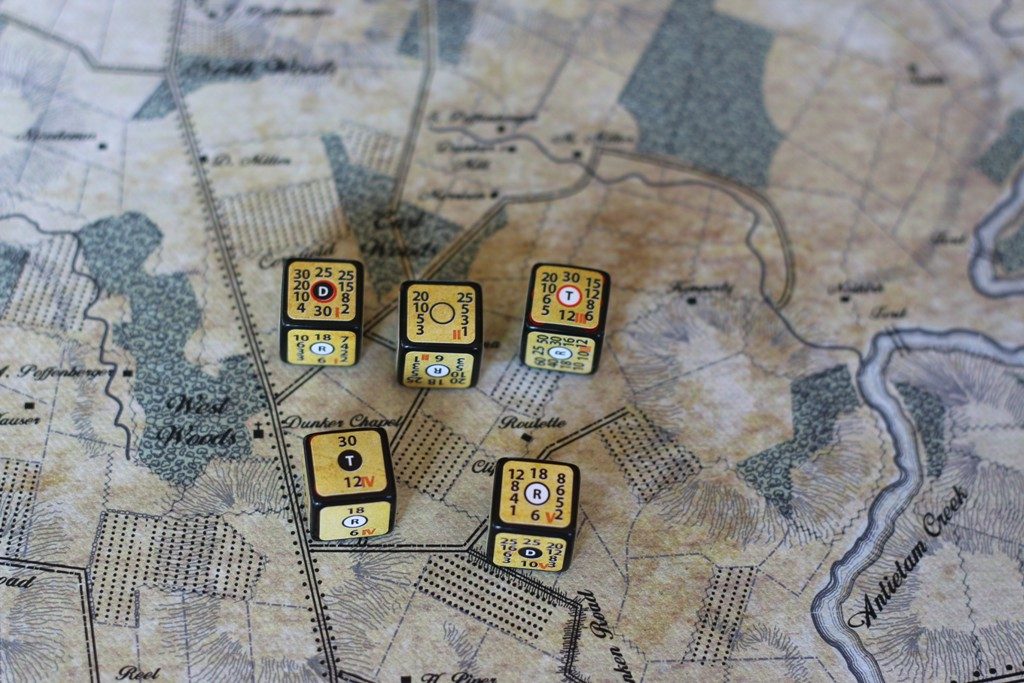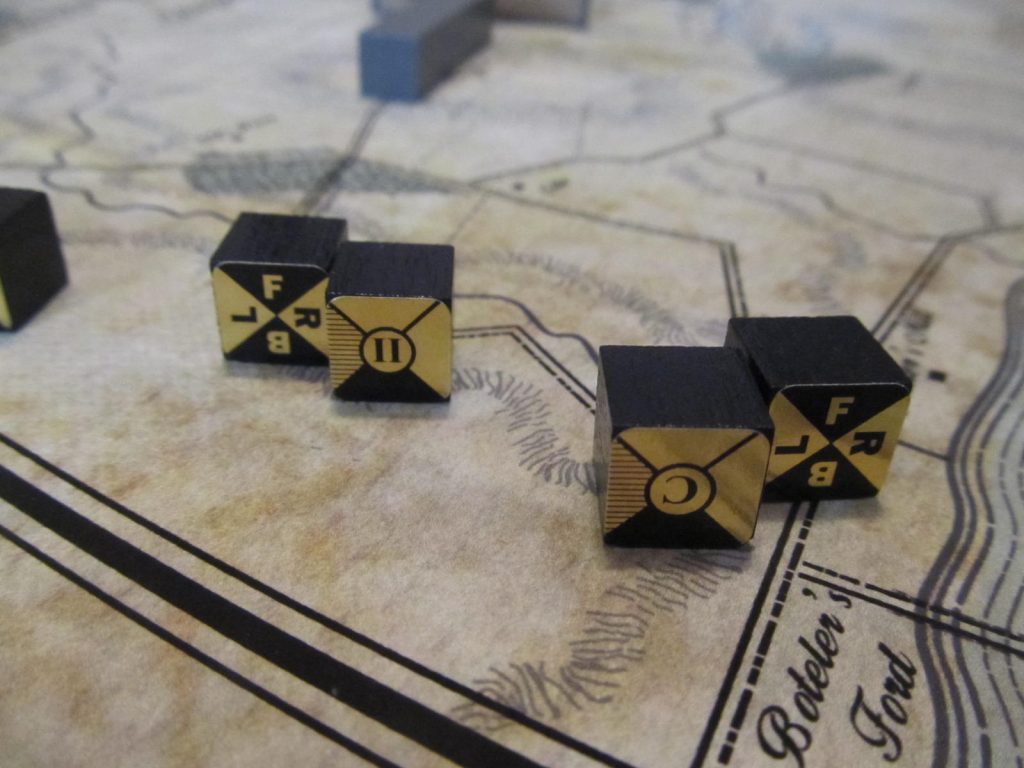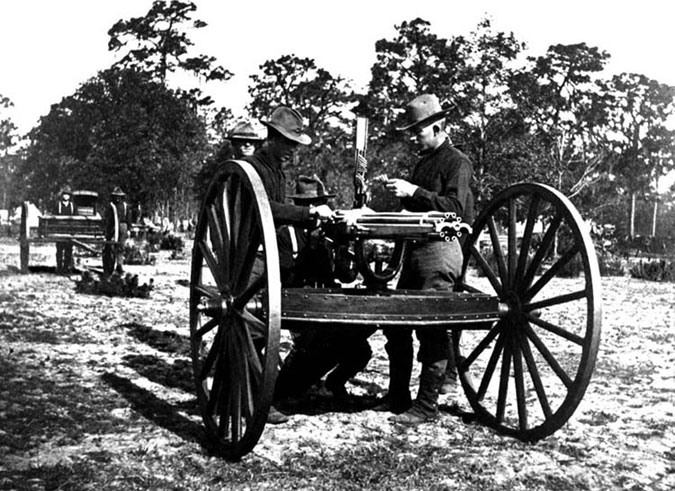
Most wargamers today know that the ‘first’ wargame was Kriegsspiel. It was created by Von Reisswitz as a training tool for the Prussian Army in 1812-ish. Kriegsspiel is mostly known for its double blind, team play via Umpires. True but have you ever wondered how they resolved combat? Did they use CRTs? No. They used Kriegsspiel Dice!
What?! How did that work? What did they look like? This is a fascinating piece of wargame history. They looked like this:

Fascinating but how do you use them? Essentially, the CRT is on the dice. Here is a brief run down on the basics:
Each die represents a different combat Odds Ratio, ie. Die I is 1:1, Die II is 3:2, Die III is 2:1 etc.
The left column of numbers are the casualties an infantry piece inflicts when firing. They go from close range at the top to long range at the bottom.
The right column of numbers is the same except for skirmishers.
The center column is used for close combat / assaults. The top number is losses for the attacker, the bottom for the defender. The letter in the center of the circle denotes result to the unit for assaults: R-repulsed, D-Defeated, T-Totally Defeated. Black is a result on the defender. White on the attacker.
The big dots in the center are also used for artillery bombardments. A red circle around the dot means the bombardment starts a fire if hitting buildings.
Those are the basics. It is a really detailed and technical combat system and it is based on the REAL combat experience of officers that served on the field in 1812. You can debate theory, rates of fire and ranges all day long but this is what actually happened in the field with real men in battle.
So how do they play? We did an experiment to find out. I was very apprehensive. First I was concerned about all the little numbers. How are you going to fit all of those on 1 die? Is the die going to have to be super huge? Even if you can, will it be too confusing? How are you even going to be able to read all those tiny numbers and find the one you need? Sounds like too much trouble. I’ll just stick with the tables. I’ve used those all my life. What’s the big deal? You just roll and look it up. I expected that this would be a failed experiment.
Wow, was I wrong. We were completely surprised. The numbers all easily fit on a standard size die. With proper formatting and colors, they were easy to see and read. The exact number you are looking for is easy to spot. Once you know what the columns are for, it is easy to pick out the exact number for your range. Your eye just snaps right to it automatically. Far easier than I would have ever expected.
The next thing we noticed was how much easier it made playing the game. This is hard to describe. Here is an analogy: Have you ever driven a stick shift in heavy, stop-n-go, rush hour traffic? It wears on you. Sure shifting is easy. You can do it but when you keep having to shift up and down constantly for an hour straight, it wears you down. Especially compared to driving an automatic.
The Kriegsspiel Dice speed things up. They free up my aging and feeble brain to focus on other things. It is pretty incredible when you think about it. There is about 20 tables worth of data all packed onto those tiny, little dice. No fuss, no muss. It felt very liberating.
Looking back, I wonder why this old piece of technology was dropped. It is an amazingly powerful and efficient tool. I wish all my modern games used dice like this.
Own a Piece of History
From the Game That Started it All
You can get your own set of real Prussian Kriegsspiel Dice here.
You can still get the original Kriegsspiel game, along with a ton of amazingly detailed maps from:
You can get scaled metal Kriegsspiel blocks here.
or



 I love using written orders in games. It adds so much depth and fun. Some players however, hate the idea of using them. It just ‘seems’ like too much fuss.
I love using written orders in games. It adds so much depth and fun. Some players however, hate the idea of using them. It just ‘seems’ like too much fuss. 



